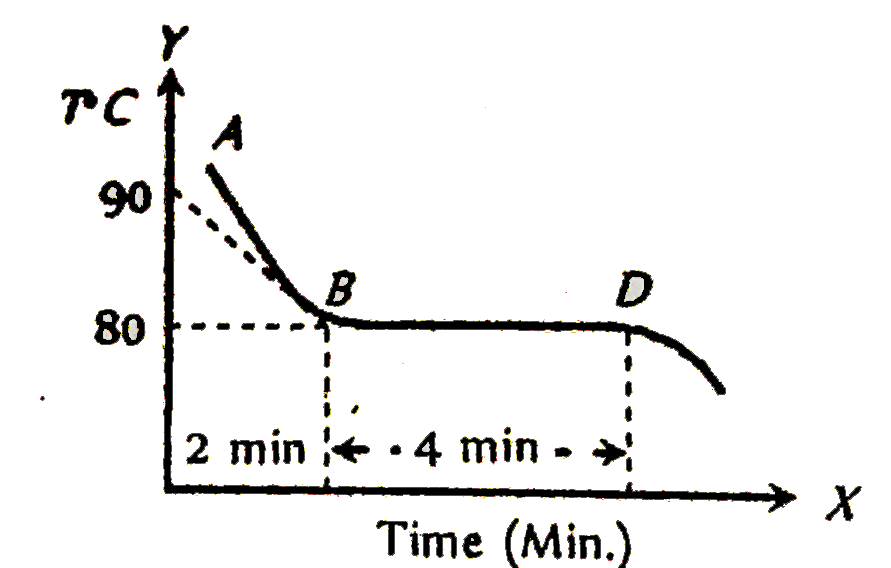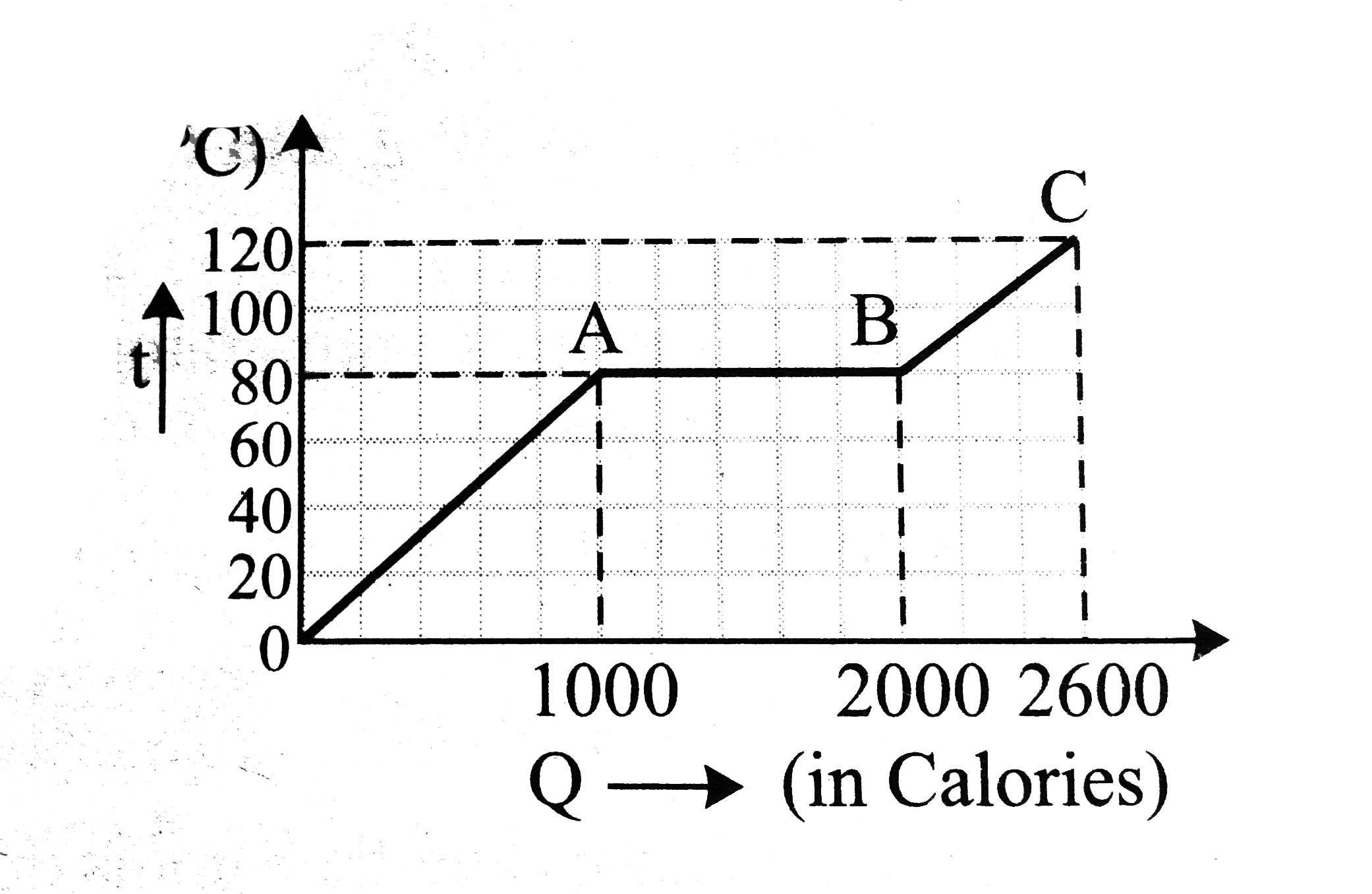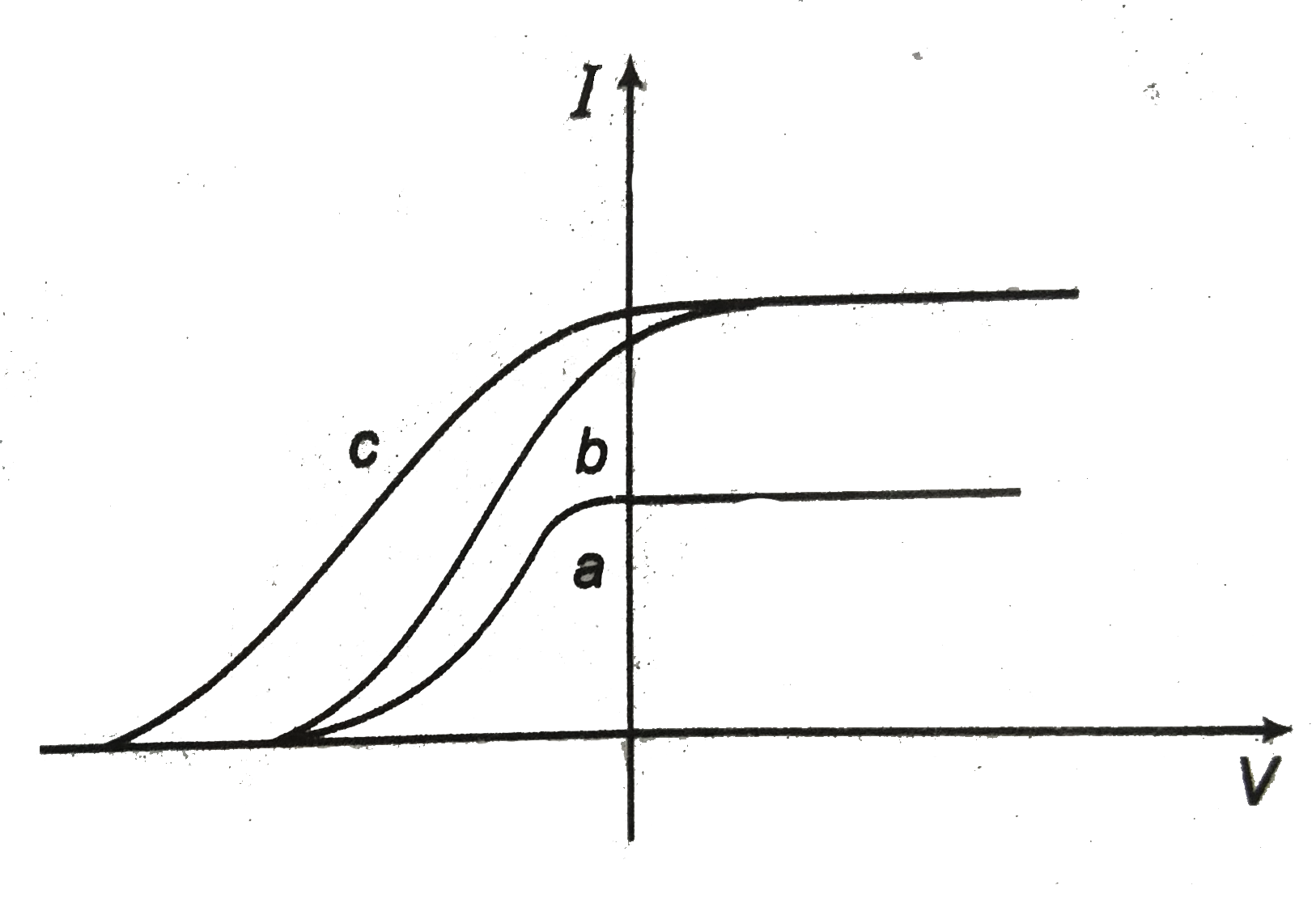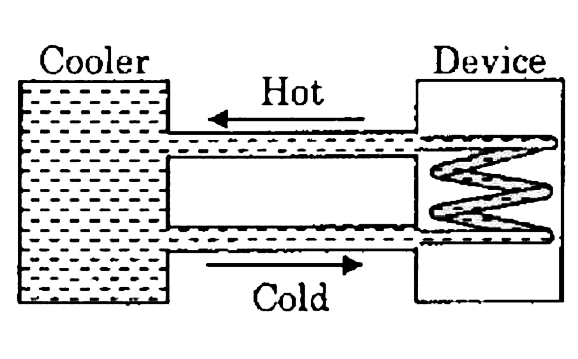The figure given below shows the cooling curve of pure wax material after heating. It cools from A to B and solidifies along BD . If L and C are respective values of latent heat and the specific heat of the liquid wax, the ratio L / C is

40
80
100
20
The correct Answer is:D
Let the quantity of heat supplied per minute be Q, then quantity of heat supplied in 2min = mc(90-80)
In 4min, heat supplied = 2mc(90-80)
∴ 2mc(90-80) = mL
⇒ L/c = 20
Topper's Solved these Questions
- BOOK - DC PANDEY ENGLISHCHAPTER - CALORIMETRY AND HEAT TRANSFEREXERCISE - Assertion and reason17videos
CALORIMETRY AND HEAT TRANSFER
- BOOK - DC PANDEY ENGLISHCHAPTER - CALORIMETRY AND HEAT TRANSFEREXERCISE - Match the columns4videos
CALORIMETRY AND HEAT TRANSFER
- BOOK - DC PANDEY ENGLISHCHAPTER - CALORIMETRY AND HEAT TRANSFEREXERCISE - Check points 16.429videos
CALORIMETRY AND HEAT TRANSFER
- BOOK - DC PANDEY ENGLISHCHAPTER - CALORIMETRY & HEAT TRANSFEREXERCISE - Level 2 Subjective14videos
CALORIMETRY & HEAT TRANSFER
- BOOK - DC PANDEY ENGLISHCHAPTER - CENTRE OF MASSEXERCISE - Medical entrances gallery27videos
CENTRE OF MASS
Similar Questions
A given mass m of a solid is supplied with heat continuously at a constant rate and the graph shown in the adjacent figure is plotted. If Lf and Lv are latent heats of fusion and latent heats of vapourisation and Sl and Ss are specific heats of liquid and solid respectively. It can be concluded that
 View Solution
View SolutionTwo liquids at temperature 60∘C and 20∘C respectively have masses in the ratio 3:4 their specific heat in the ratio 4:5. If the two liquids are mixed, the resultant temperature is.
View Solution
A substance is in the solid form at 0∘C. The amount of heat added to this substance and its temperature are plotted in the following graph. If the relative specific heat capacity of the solid substance is 0.5, find from the graph (i) the mass of the substance, (ii) the specific latent heat of the melting process and (ii) the specific heat of the substance in the liquid state.
Specific heat capacity of water =1000cal/kg/KView SolutionA small quantity mass m, of water at a temperature θ(in ∘C) is poured on to a larger mass M of ice which is at its melting point. If c is the specific heat capacity of water and L the specific heat capacity of water and L the specific latent heat of fusion of ice, then the mass of ice melted is give by
View SolutionA small quantity mass m, of water at a temperature θ(in ∘C) is poured on to a larger mass M of ice which is at its melting point. If c is the specific heat capacity of water and L the specific heat capacity of water and L the specific latent heat of fusion of ice, then the mass of ice melted is give by
View SolutionThe figure shows the variation of photocurrent with anode potential for a photosensitve surface for three different radiations. Let la,lbandlc be the curves a, b and c, respectively

(a) fa=fbandla≠lb (b) fa=fcandla=lc
(c ) fa=fbandla=lb (d) fb=fcandlb=lcView Solution250 g of water and equal volume of alcohol of mass 200 g are replaced successively in the same calorimeter and cool from 60∘C to 55∘C in 130 s and 67 s, respectively. If the water equivalent of the calorimeter is 10 g, then the specific heat of alcohol in cal/g∘C is
View Solution250 g of water and equal volume of alcohol of mass 200 g are replaced successively in the same colorimeter and cool from 606∘C to 55∘C in 130 s and 67 s, respectively. If the water equivalent of the calorimeter is 10 g, then the specific heat of alcohol in cal/g∘C is
View SolutionA water cooler of storages capacity 120 liters can cool water at a constant rate of P watts. In a closed circulation system (as shown schematically in the figure), the water from the cooler is used to cool an external device that generates constantly 3kW of heat (thermal load). The temperature of water fed into the device cannot exceed 30∘C and the entire stored 120 liters of water is initially cooled to 10∘C. The entire system is thermally insulated. The minimum value of P ( in watts) for which the device can be operated for 3hours is

(Specific heat of water is 4.2kJkg−1K−1 and the density of water is 1000kgm−3)View SolutionFill in the blank spaces by choosing the correct words from the list given below:
latent heat of fusion, melting point, steam, constant, latent heat of vaporisation.
The amount of heat required to change 1 g of a substance at its melting point into liquid state without any rise in temperature is called specific_________.View Solution

